Wise.com adopted programmatic SEO way before it became a trend as it is now in the SEO industry, and they’ve paved the way for many others to follow.
Currently, they drive an estimated 30.3M visitors to the site from the SERP a month, which has continued to compound since they migrated from transferwise.com back in 2021.
Their success story is truly one for the SEO ages.
Strap yourself in as we break down the genius behind:
- A perfect migration strategy
- Their SEO-focused custom CMS,
- Their content machine bulldosing through the SERP
- An internationalisation masterclass allowing Wise to spread its reach across all global markets.
A brief bit of history
Wise was founded back in 2011 and was previously known as ‘Transferwise.com’. Their rebrand to the name Wise meant a migration was in order for the new domain Wise.com back in Feb 2021.


Migrations can destroy your search traffic overnight if done incorrectly, however, Wise seemingly came out unscathed and continued to see rapid growth straight away.
Wise's Migration Strategy: Key Takeaways from Fabrizio Ballarini's Insights
- Staged Migration: Instead of an immediate full-domain redirect, Wise initially ran wise.com alongside transferwise.com, allowing for comprehensive testing.
- Pre-Migration Testing: Before the official site move, the team conducted extensive tests on both staging and live production environments to ensure search engine bots wouldn’t get confused.
- Domain History: Wise leveraged the fact that wise.com had been a parked domain for years. They began indexing some pages on this domain before the official site move.
- Customer Onboarding: The homepage of wise.com was indexed with specific cookies set up to ensure a smooth transition for existing customers.
- Live Redirect Testing: Redirects were tested live in production for a few hours across select geographical locations. This not only ensured that bots functioned correctly but also helped debug their core platform, which handles billions in transactions monthly.
- SERP Challenges: The only hiccup noted was with the “wise” search engine results page (SERP) before the official site move. However, Ballarini was optimistic about its minimal impact, given the low number of customers searching for “wise” at that time.
In essence, Wise’s migration strategy was not just about technical SEO but also about understanding user behavior and expectations. Their successful migration is a case study in meticulous planning, user communication, and technical expertise.
The genius behind their SEO however, came before the migration as we can see from presentations by the likes of Fabrizio Ballarini back in 2019. A lot of it stemming from their custom CMS.
Custom CMS - A Wise SEO Decision
Before we can delve into the success of Wise’s programmatic SEO and content strategy, we need to start at the core, their custom CMS.
Wise has taken a headless approach, which is something we covered in detail the Gymshark SEO case study.
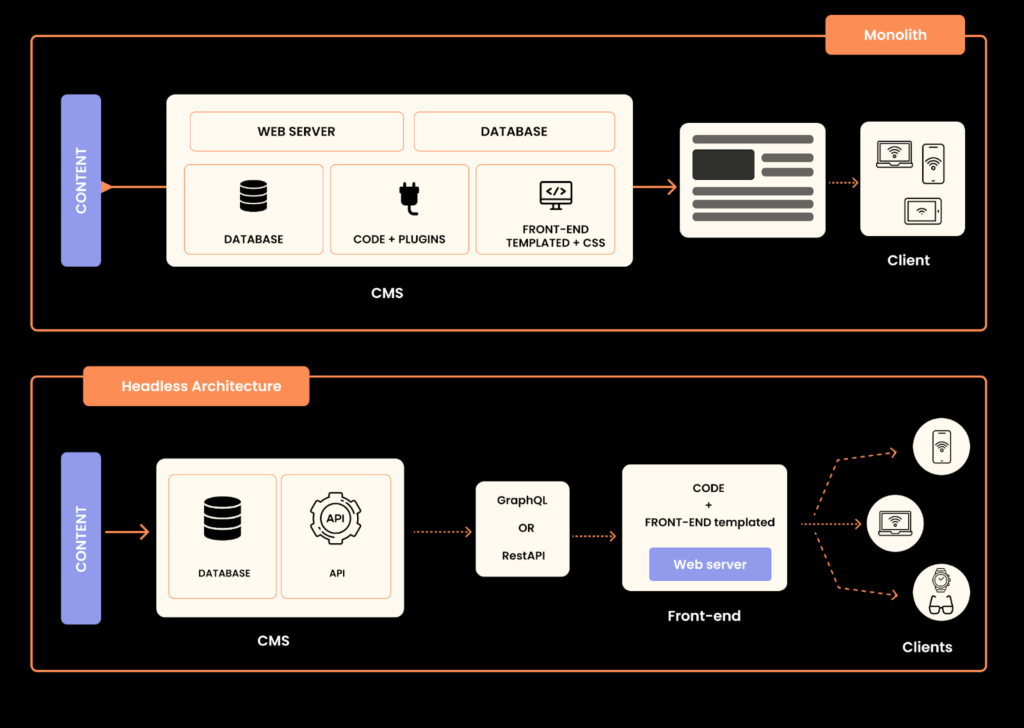
A headless CMS allows Wise to be more agile, improve the ability to scale content, and page production, innovate on the go and avoid being bogged down by an overliance on third-party plugins and dependencies a modular CMS typically has.
Both the combination of a headless CMS and customisation that went into the CMS with SEO at the heart of it’s development has meant they have created quite the machine.
Early collaboration with platform developers
Fabrizio states the importance of working alongside developers early on in a new platform adoption or migration.
The “DevMometer” is a diagram Fabrizio uses to explain how crucial early collaboration is.
Unlike most organisations, Wise understood the value of bringing on their SEO team early in the development stage.
Through implementing their suggestions and listening to their requests for iterations, they have been able to create a platform that works like clockwork in terms of content creation, being attractive to Googlebot and for SEO optimisations.
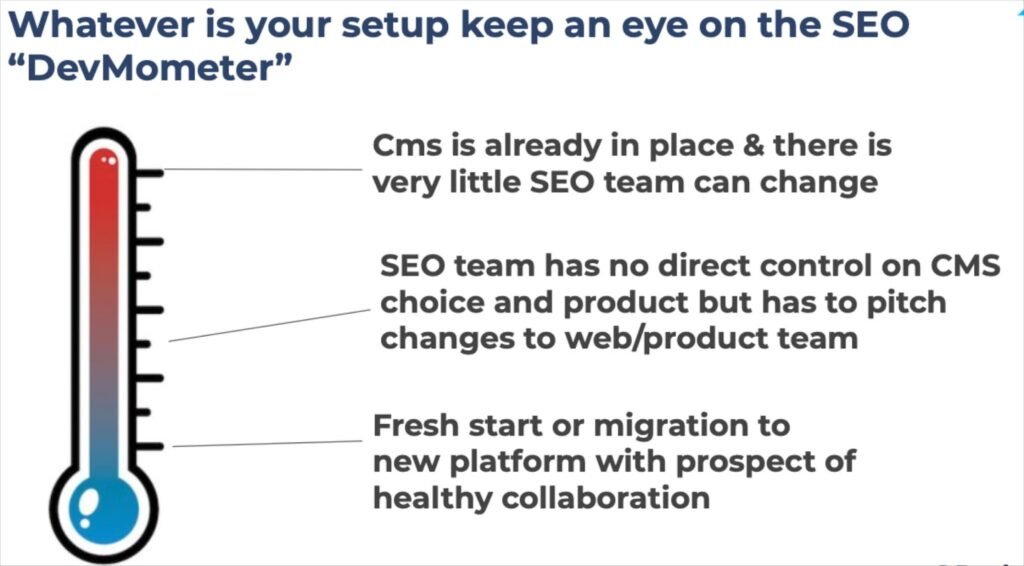
Implementing unique processes and SOP’s
In his presentation, Fabrizio ran over the need to customise processes based on specific business needs.
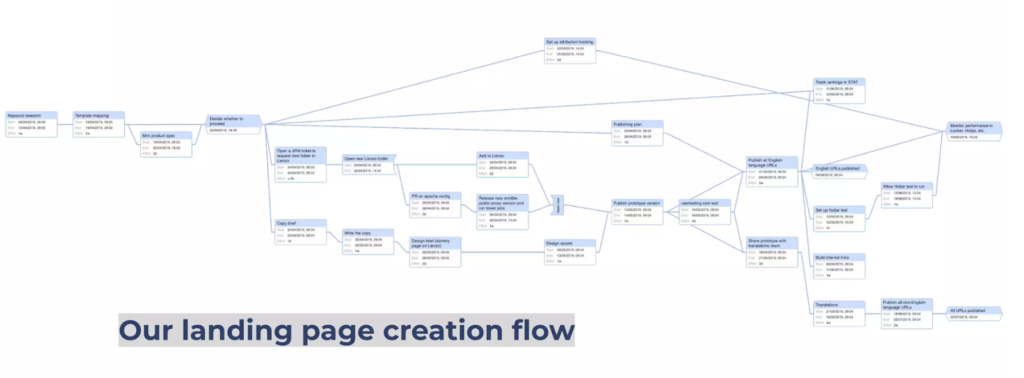
Part of this involves setting up templates in the back end, custom to their landing page designs.
This ensures consistency and clarity in what they would need to display to their customers as well as to Google. It also avoids human error and allows them to use potentially less skilled team members to scale their production of important and high-value content.
They then have clear SOP’s for every stage within the landing page creation flow. Having both the templates and SOP’s for their “structured” content, means a more scalable, repeatable process.
It’s worth noting that, they still have an ‘unstructured’, editorial focussed content strategy, which is for specific topics and managed separately in each region. More on this further down.
A Wise Programmatic SEO Approach
Boiler Templates and High-Volume Landing Pages
From swift codes and bank routing numbers to currency converters, wise has established core boiler templates for these topics in order to go after the tens of thousands of queries.
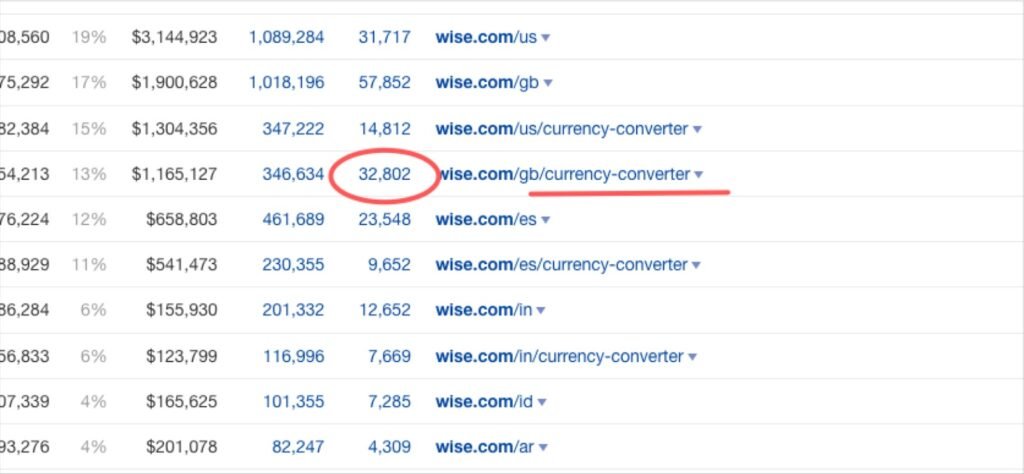
To give you an idea of the search volume magnitude Wise can go after, for the ‘currency converter’ category they have established 32,802 landing pages for the UK subdirectory, amounting to 356,634 visitors per month.
Crazy figures.
With the audience’s desire/pain point being so specific when carrying out currency conversion searches, Wise is able to create the exact same page, swapped out with the specific currency conversion information for the two regions every time.
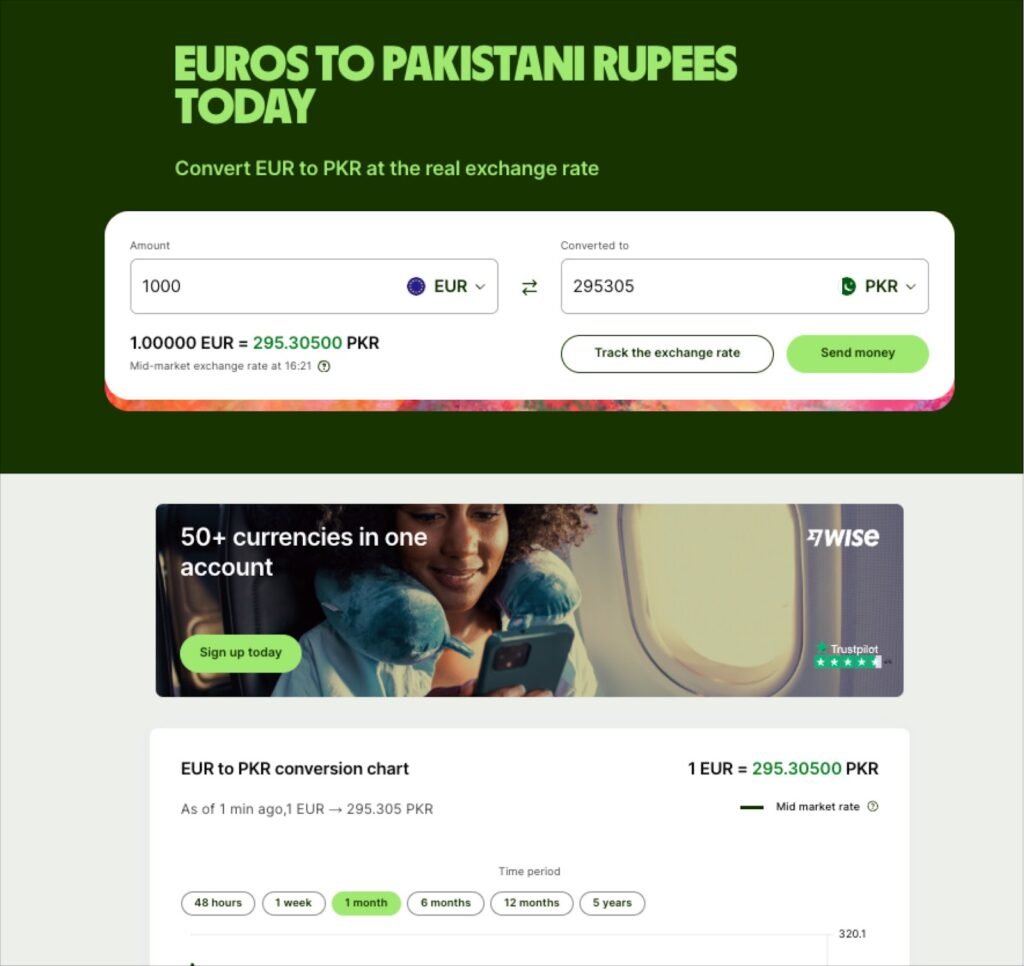
Google rewards them for providing a good UX and accurate information. Although it might be argued that the content isn’t unique enough, it is “helpful” to the reader and through the use of API’s and scraping competitor exchange rates, they are able to deliver up-to-date metrics and conversion rates. Precisely what the user needs and wants.

Scaling & Velocity – key KPI’s
One common theme I’ve begun to see across many great SEO case studies is the focus on new pages being indexed as a key KPI.
Which is exactly what Wise looks at. Fabrizio stated that “The more content you feed to Google bot the more it gets addicted to crawling, indexing and serving your site. Especially for brand new sites, it’s so important to keep up feeding Google quality pages. My favourite KPI on early-stage projects is indexed pages/month”
You begin to see how highly Wise values content output when Jared Keleher (Organic Performance Marketing at Wise) puts it as their number one KPI to track in his Brighton SEO presentation.

In the last year alone, they have published 213,746 pages, over double what they had indexed in 2022. Going from 173,781 to 387,527.
Taking them from 15.8M visitors to 30.47M.
If there was ever a case study to prove a high content output works, this is it.
Link Building vs. Content Creation
Fabrizio briefly touches on the fact that Wise does not currently do any form of link-building.
He candidly explains it as being “Just in the mood to build more pages”. Although, there’s more to it than that.
- They are able to leverage their significant brand authority unlike most brands, so they will be able to naturally acquire links, also aided by traditional PR work.
- They also don’t have unlimited resources and seem to have a fairly lean team. Meaning they need to decide where to use their resources. At the moment, they see most value in focussing on creating more content rather than building links.
Considering they didn’t even have SEO team until 2015, but still managed to reach a 75 DR, this approach to no link building hasn’t seemed to be a constraint.
Briefing in Bulk: A Time-Saving Approach
Alongside having a custom headless CMS focussed on content production and SEO, Wise understands that people are predictable and that content doesn’t need to change too heavily from one topic to the next if the intent is the same.
This is why they suggest briefing in bulk once you have a clear idea of how the structure should be laid out for repeatable topics.
Instead of this :

Brief like this:

The content becomes a lot easier to brief, create and sign off if the team are able to use a repeatable process for each brief/content type.
Localisation
Wise's Global Ambition
Wise aims to be ranked in the top position in the SERPs across all global markets.
Currently there are only 23 countries Wise doesn’t operate in and Fabrizio has stated that due to the demands from the product team wanting Wise to have instant traction when they are able to operate in new markets, they have decided to compete ahead of time in those regions.
This would suggest that they are competing for #1 spot in just about every region globally, yet in on the website they have 61 country sub folders available – so it might not be every location just yet.

Either way, dominating 61 major global markets is no easy feat, yet Wise seems to be doing a pretty good job.
Across those 57 markets they write in 33 different languages and seem to have at least 37 different content writers.
Managing International Content
Just as with the content briefs, Wise understands that most individuals are predictable and the same type of content can be used across multiple markets.
This makes it far cheaper to scale templated landing pages in other markets. Instead of having to strategise new content approaches which is costly in terms of time and hiring skilled labour, Wise can simply translate the content to perform in the exact same way.
Fabrizio explains the simple process a writer would need to take to create the content in a new language.
- Obtain the ‘Crowding strings’
- Do a config change
- The translator “gets a bunch of strings” and then they will appear on the website boiler plates

Even though it’s not totally clear, what he is explaining is how the components within the boiler template can be translated easily, once they have been setup for the regional sub folder/directory (e.g. wise.com/gb) and organised to make sure the content translates appropriately by labelling and moving the “strings” round.
Needing more than a direct translation
Not all markets are created equal – simply translating content might be the most cost and time efficient way to expand and dominate markets. However, for regions which are culturally different and have specific legal requirements that might impact the content, this doesn’t work as well.
For the editorial content (blog posts) this is even more important and Jared points this out by going through some of the differences from one market to another. Such as:
- Singapore: You must not subvert “family as a basic unit of society”
- Turkey: Your marketing must not go against ‘public morality.’ No physical intimacy. No kissing.
They use native writers for their editorial content, so they will no doubt have a good understanding of what can and can’t be said, but it is clearly a more lengthy and well thought process for blog posts than the landing pages.
Key learnings:
- Indexed content is king. If you are going to take one thing away from this case study, it’s Wise’s relentless approach to indexing more content for their audience. They understand that not all of it will perform, but perfection isn’t the KPI here – it’s indexed content and the more of that they can produce with increasing efficiency, the better return they will get on their SEO.
- Planning ahead of time on migrations is key – debugging as they are slowly transitioning is a far better processs than the traditional migrate > then debug
- When using programmatic approaches and you have to manage thousands of pages, work with development team as early on in the process as possible.
- Ideally look to go headless for your CMS
- Most of your audience is predictable – where possible capitalise on scaling briefs and content by understanding when processes can be repeated. Notably, in new markets and for similar content types.

